Translation of fragments from the Chapter “Heinz Kohut and the invention of the psychoanalytic psychology of the self” unpublished book by Robert Salzman “Psychotherapy as a personal confession”1. Per. from English. © Eugene Pustoshkin, 2018.
Optimal frustration for Kohut and Freud
The psychoanalytic aim is to help the patient to distinguish between the Oedipal desires and the more Mature ambitions, bearing with him the true satisfaction through diligence in the real world.
Freud described the need for such discernment “the reality principle” and claimed that
“experience “optimal frustration” is responsible for the distinction between desire and reality. Optimal frustration is in the child experiences a delay period before satisfaction of a desire. Due to this delay the child attains the understanding that it is necessary to take active steps in the world to satisfy their desire. According to Heinz Kohut who taught Freud’s theory from 1958 until the late 1960’s in the Chicago Institute of psychoanalysis Freud put forward the idea that only through an optimal frustration, a frustration that is neither too intense to be traumatic or too weak to remain minor, it is possible to learn to distinguish between desires and reality” (A. Siegel, 1996, p. 27).
Grandiosity and idealization in psychology of the self Kohut
Kohut (1966/1978a) put forward the hypothesis that the world is a baby’s naturally filled with bliss until the inevitable errors in the process of maternal care begin to threaten this bliss. To guard against the destruction of his serene world, the baby creates two new system “narcissistic perfection.” One of these systems – “idealized imago or image of a parent” – is an attempt to protect the wellbeing of the infant by empowering the external object of unlimited power and goodness.
The second system – “narcissistic “I”” is a fantasy that all good is contained within the baby, and all the bad things out. Later, Kohut (1968/1978b) change the terminology: “the narcissistic “I”” became “big “I,””.
Each of the two forms of narcissism – grandiosity and idealization – follows its own development trajectory. Idealized parent imago – an image of a perfect other with whom you can enter the total merger and will serve as the source of infinite power, perfect goodness and limitless power – is subjected inevitably disappointing comparisons with the real parent. If these frustrations are not too sudden or traumatic, imago is slowly but surely turning into ideals. Big “I”, which Siegel (1996) compared the superhero from the comics, able to achieve everything without any restrictions – longs to receive from parents or other important caregivers recognition of his perfection and the admiration of his astonishing powers.
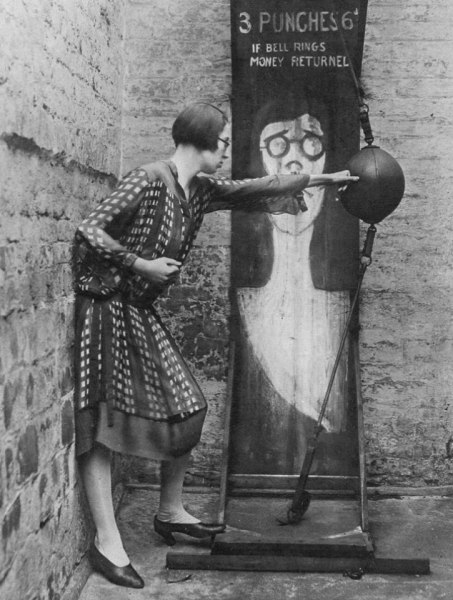
According to Kohut (1966/1978a), without such evidence a positive rating, without the “gleam in mother’s eye,” narcissistic “I” of the child cannot attain sufficient maturity; if the baby is getting adequate admiration of his archaic grandiosity is growing up, becoming a realistic ambition.
About growing up the child’s idealized image of a parent and the feelings of grandiose “I”
By 1971, the time of publication “Analysis of the self”, Kohut was ready to discuss what happens if not observed proper process of growing up idealized parent image and the grandiose “I”. As we have seen, if the idealized parent imago, the child is subjected to gradual pressure from a number of disappointing, but tolerable experiences obtained in the interaction with the real parent, then is the internalization by the child of idealization that takes form ideals. For example, the idealized imago of the “daddy” as flawlessly noble, entirely moral, entirely fair Keeper of the truth can Mature and take shape the more abstract love of justice.

However, if the line is broken, possibly the result of disappointment in the actual father, coming suddenly and too traumatic to digest, the idealizing narcissism will not be able to Mature to form ideals, instead remaining a haunting is active in adult life. This can lead to the fact that the individual will be forced to look for people, not abstract ideals – which he could idealise throughout his life. Extreme examples of this pathology can be seen, for example, in the case of members of destructive sects.
If big “I” prostiraetsya tolerant enough (i.e. optimal) way – for example, sometimes when a mother praises the child, and sometimes too busy with their own Affairs to notice the “greatness” of the child, then the need for personal admiration, the child has the opportunity to gain a more Mature form of ambition to obtain recognition for the genuine advances in the real world. However, if the frustration is too traumatic, perhaps the mother was depressed and never noticed the child, then, according to Kohut, the child will not progress in this line of development when he can in his imagination to provide the opportunity to receive adequate recognition through achievements in everyday life.
In this case, it is a boy or a girl even in adulthood, to maintain quality of the archaic grandiosity, passing its life in the absence of a stable self-esteem (self-esteem) may be having an acute sensitivity to imaginary manifestations of neglect, or requiring other attention. In extreme manifestation it is called “borderline personality.”
The return of idealizations and the integration of feelings of grandiosity as a way of growing up of the self in Kohut
Kohut (1971) believed that the successful maturation of the idealized parental imago is a process of “transmuting internalization”. This means that the idealization thrown over guardians, under the condition of gradual return them to itself, absorbed into the psyche of the child. And then they form “new structures that assume the psychological functions previously carried out by the idealized object, deprived of personal qualities of the subject ie, in fact, impersonal experience as approx. transl.” (Siegel, 1996, p. 7). <…>
In relation to the grandiose “I” you can draw Parallels with the understanding of Kohut successful maturation of the idealized parental image as a process of “transmuting internalization”. Kohut (1971) believed that the great “I am” can also be transmution, or converted may be a process of transformation from a situation in which the individual appear absurdly exaggerated requirements to ensure that it paid attention, and unattainable fantasies of power, domination and admiration, to the emergence of “self” or “I”, able to truly enjoy everyday life and its possibilities.

But there is one significant difference. Conversion of parental idealizations requires at least some support from the parent – for example, a certain willingness on the part of the parent to take to him a child of idealization. However, if in the process of growing didn’t happen and sudden traumatic disappointment in an idealized figure, then during the daily Association of idealized images of adults with real parents will inevitably occur more or less automatically and progressively removing the idealization of the object by their gradual metamorphosis into abstract ideals. On the other hand, the transformation of the archaic grandiosity to realistic self-assessment requires the active participation of parents in recognizing and supporting the needs of the child in the rapture, and therefore, it requires parents who are comfortable projected sense of self-grandiosity. Siegel (1996) offers an excellent example of this “right” of participation:
“Until tried to get up and straighten up at the extended palm of his father. The boy climbed on his palm and after a brief effort to catch the balance, stood straight up. The father said proudly: “world champion!!!”, and the boy triumphantly raised his hands above his head, with a smile from ear to ear. Like statues, they stood in unity with each other, while the boy, choosing the right moment, turned and jumped into the father’s hands, and that it concluded in a joyful embrace.
This game is a great example of the complicity of the father in the exhibitionistic narcissism of his son and provide literal support to it. Comfortable acceptance by the father of the grandeur of his son contributes to the mild exhibitionism of integration in the self of the boy. The father performs the psychological function of a mirror, which validityrule, accepts and calmly reflects the boy’s grandiosity. The father’s part in the game and his open pleasure at the exuberance of his son helps to regulate the intensity of this rich radiance of grandeur. The father creates a safe space to play, in which the boy’s narcissism can exist, untouched by shame, guilt, embarrassment, or procedure” (p. 87).
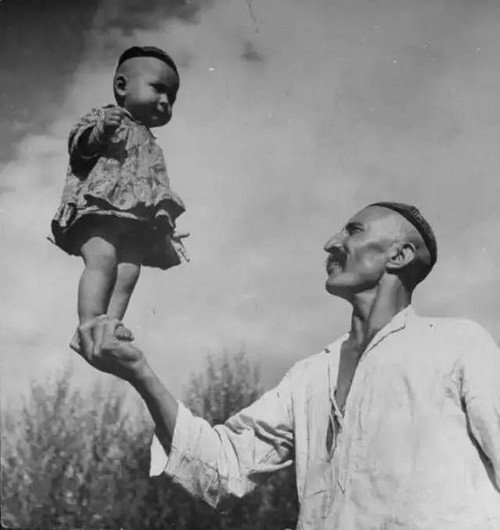
According to Kohut, a parent who easily performs the function of a mirror (as in the Siegel example), or without difficulty performs another important function – the function of containment of idealization on the part of the child is not perceived by the child as an independent personality. Rather, that parent is treated as part of the self of the child as an extension of his “I”, and Kohut (1971) called this ability to function as a psychological extension of the “function “I”object”. The person performing this function, it called “”I”object” (self-object). He later removed the hyphen, and created the term “object” or “someobject” (selfobject) to emphasize the idea that: “performing this function object is not experienced as something separate from “me””.
“The psychological structure <…> represent the internalization of comforting, regulating voltage and adaptive functions, previously performed by someobject. These structures develop as a result of the gradual extraction of narcissism. Earlier this narcissism was headed for the old idealized objects, but now these structures continue to perform their psychological functions even in the absence of someobject” (Siegel, 1996, p.72).
The self as a center of experience and initiative of Kohut
Deeply convinced that the self is something “beyond empirical knowledge, some nastojashee concept, something more than just the sum of its parts, something that has cohesion in space and continuity, or continuity in time” (p. 177), Kohut saw her as “independent center of initiative <…>, the Central metapsychological the concept” (Lee & Martin, 1991, p. 180). It was a radical departure from psychoanalytic theories, seeing “self” as a content of “mind”, that is, as a collection of somarepresentative. In Kochetovka view, “self” functions as an entity, or unity: it is both a unifying and organizing principle – for example, as the center of the continuity of experience or what, Psychotherapist (1988) called “continuation” (going on being), and a single activity centre – for example, when a child learns motor control (Lee & Martin, 1991). If the environment in which the infant creates the necessary conditions for the proper emotional development, then, as did Kohut, the “nuclear self” (or “self-core”) will be
“to establish a continuous arc of tension from the base of ambitions via basic talents and skills to the basic ideals. This arc voltage is a dynamic entity full, adefective self <… > that allows you to keep creatively productive and fulfilling lives” (1977, p. 4). <…>
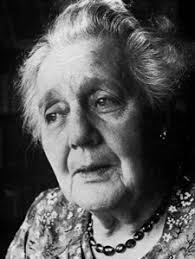
The theory of Kohut has implied that the self is something that is destined to be what was going to occur, and only the failure to provide necessary care may hinder the development process. <…> Kohut did not consider aggression as “an innate attraction drive, requiring discharge”; he saw it as “”product of disintegration” that occurs as a reaction to unresponsive environment, slow down the development of the nuclear self of the child” (White & Weiner, 1986, p. xx, my emphasis); in other words, aggression is not an innate desire, a response to incorrect parent symptoms.
Thus, the model of Kohut can be considered as theory, laying the blame on parents, in contrast to the blame on the child theories of Melanie Klein. The latter perceived the parent as the target of the frustrations of the child, his envy and hatred, and laid the blame for resulting in further pathology on the excess of aggression in the newborn (Lionel Corbett, personal communication, 2 December 1995). This something is the essence kohoutovicka departure from her early work as a Freudian psychoanalyst: desire drives do not create the self, that is
“man is not born for conflict <…>, it is not necessarily in the relationship of confrontation to their parents or their culture, and <…> its development is not determined and not determined by the drives or instincts, as you know their psychoanalysis” (Basch, 1984, p. 29).
The formation of the self and Shine in the eyes of parents
Bash (Basch, 1984, 1988) believed that feelings in contrast to the basic affective manifestations, – approx. transl. begin to occur at the age of about 18 months when affective reactions begin to sopernitsa with arising sense of “I”, or self. This corresponds to the idea of Kohut (1977) that in the presence of “average expected care” nuclear, bipolar self begins to manifest itself during the second year of life. “Dvuhyarusnaya” here refers to the fact that the self-the core consists of two sectors: a primary ambition and a primary ideals. Kohut believed that the child “has two chances at establishing a strong early bipolar self. The first opportunity is through the full approval, support and reflection of relations with the parent someobject; the second opportunity is through relationships with inspiring admiration, idealized, usually a father someobject” (Berkowitz, 1983, p.128).

Marian Tolpin’s (1983) points out that Kohut later expanded on this bipolar model of the self to a three-pole, adding another type samobytnyh relations, Kohut called the “biznesowego” (twinship), which she preferred to call “partnerstvu “I,””.
“The basic psychological components of nuclear self: (1) grandiose exhibitionistic “I” – so to speak, the child crying out “MA, look! no hands!” and looking up to their parents to see “sparkle” in their eyes and an answering smile; (2) idealizing the “I” is a child who looks up, reaches out to parents, wants it picked up, calmed and cheered, so he could recover and over again with some enthusiasm to look around to see something interesting is happening around; (3) “partnerstwie” “I” – a child who wants to hold parents ‘ hands, to be with them (like little boy, who walked around a little then, when and dad)” (p. 120).
Ultimately, kogutovskaya three-part model was even more expanded, and stern (1985) identified seven different forms samobytnyh relations. But the basic idea remains the same: every infant is born with piecemeal (fragmented) self, which becomes a fortress, coherence, certainty and stability through interactions with caregivers, which empatico respond to the needs of the baby. With sufficient “empathy of alignment” the baby gradually internalserver the functions of the guardians, but inadequately attuned bad leads to developmental delays in one or more sectors of the self, leaving the result of structural deficits that require compensation in ways that could be acceptable for a child but are not fotopriemami for adult. For example, the infant who lacked adequate Triennale (he hasn’t seen enough of the sparkle of interest and approval in the eyes of the mother), can grow into an adult who seeks approval from other people in ways and in situations which are inappropriate, destructive or dangerous.
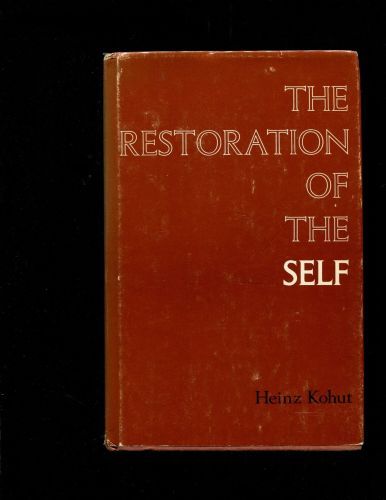
Depending on how archaic emerged in the development of the gaps and how are they numerous, adult person can either experience a separate, isolated episodes of sensitivity, as is the case with most of us, or it can be immersed in flour severe narcissistic disorder, which is characterized by self, non-coherent, “self split”, requiring constant stimulation (affective arousal) just to continue to support the feeling that it generally is. Such cases fall into the attention of therapists using a variety of symptoms: depression, rage, anxiety, addiction, perversion, extreme vulnerability to neglect, obsessive thoughts, sexual acting out, etc. (Kohut 1977, 1984).
Novocaines the human psychology of the self Kohut
Fortunately, according to Kohut (1977), the human psyche is the inherent tendency to continue its development. It makes it possible psychotherapeutic intervention, even in severe disorders of the self. Such intervention is a complex process, but you can try to Express briefly the main idea: analyst empatico “constrained” the patient through “indirect introspection <…>, i.e. the ability to think and feel ourselves into the inner life of another person” (Kohut, 1984, p. 82). This empathic attunement triggers the formation conditions of the transfer, which take on the form of development deficits inherent in the patient. In other words, when the patient feels attuned with it Analytics, it begins to demand from it what he needed, but which is not received in infancy and childhood.
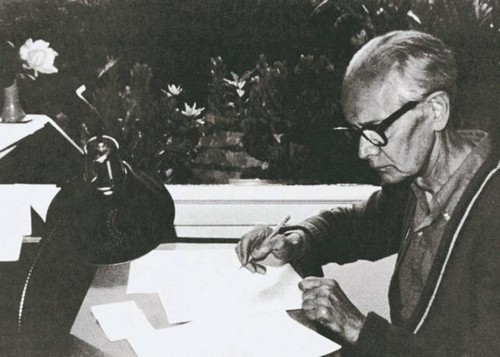
Heinz Kohut
So, a patient whose infantile grandiosity was not sufficiently reflected – i.e., seen, and supported, – may be willing to continuously listened with an unfading interest. Analyst, even if he or she tries to meet all the requirements of the patient, inevitably will not be able to meet them. This will cause a negative reaction from the patient. The analyst inevitably “fails” to satisfy these requirements, because even if he has reached a more or less accurate understanding of patient’s feelings and even if he recognized that the patient has the right to these feelings, there is not the slightest opportunity fully to satisfy such archaic requirements within the constraints of the psychoanalytic context. Patient responses to these “empathic failures” can, in this case, to be interpreted from the point of view of the history of his psychological development. That is, in relation to his traumatic (intolerable) disappointments in the parent someobject.
According to Kohut, just as inevitable, but tolerable disappointments in the inability of parents to show empathy provide the ability to incorporate a patient inside samobytnyh functions of the parent, as such the cycle “of failure on the part of the psychotherapist” and the interpretation of the frustration of the patient provide the patient the opportunity to incorporate into itself samobytnye functions performed by the analyst. This is done via “transmuting internalization” (1979, 1984). Thus, within the framework of this concept, psychoanalysis is no longer a process of “unconscious awareness” or process, expressed in the principle of “where was “it” (ID) should be “I” (ego)” (Freud 1933; CIT. in Kohut, 1984, p. 103). Rather, it is now a process-specific understanding by the analyst of the patient’s needs and the recognition of the analyst that this need “is legitimate <…> and as a revival of old unmet needs, and as a manifestation of universal human needs in someobject – need, persistently remaining human throughout life” (p. 103).
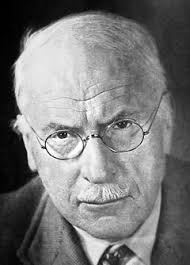
In Kochetovsky model the deployment of the self is given a teleological orientation. Kohut rejected the theory of the conflict with the instincts (drives), proposed by Freud, because he, like Carl G. Jung, came to the belief that the self is something mysterious and unfathomable: “we are open only her introspective or empathically perceived psychological manifestations” (1977, p. 311). Like Jung, Kohut believed that the self characterized by a certain innate predisposition: “nuclear “I” <… > is a structure that, once it is formed, from the very beginning has its own destiny, or potential life trajectory” (1978c, p. 594). For Kohut, the implementation of this fate is a major event in a person’s life. The fact that Jung probably would have called “individuation”, Kohut called the persistence of fidelity “naikrupneyshim purpose,” as expressed, for example, in this statement:
“I believe that, at a later stage of life can be considered a certain point as vital. This is the point in the life trajectory of the self, the final check determines whether successful were previous development or not. <…> But I tend to think the turning point even later – late middle age when, nearing the inevitable end of life, we ask ourselves whether we have kept to our naikrupneyshim purpose. For some people this time of utter hopelessness, extreme lethargy, depression without guilt and focused on itself, the aggression that grips those who feel that he failed and cannot fix the mistake, given that time and those energies which he has at this moment there are.” (1977, p. 241)
Confirmation of the self psychology of Kohut in studies of attachment John Bowlby
John Bowlby, let him and studied with Joan Riviere, a Kleinian psychoanalyst, and supervisor he was very Klein – ultimately rejected kleinosky the idea that emotional development is a group of endogenous fantasies growing out of the death instinct and its conflict with the libidinal drives. Instead, Bowlby put forward the thesis that in this process a crucial role is played by the real family experience, not the internal fantasy of the child (Bretherton, 1994).

John Bowlby (1907 – 1990)
Bowlby extensive observations and interviews with their parents have convinced him that
“to the mental development unfolded in a seamless, undifferentiated psyche must be exposed to <…> the part of the psychic organizer – the mother. <…> She directs the child in space and time, provides his environment, permits to satisfy some impulses, and restricts the satisfaction of others. <…> Gradually the child learns that a variety of art and myself.” (1951, p. 53, op. CIT. according to Bretherton, 1994).
This concept, apparently, is related to the idea of Kohut’s parental someobject and its gradual internalization. According To Bowlby:
“The joint task of therapist and client is to understand the origins of working in the client’s dysfunctional internal models of self and attachment figures. <…> A therapist can provide the greatest assistance, serving as a reliable, secure base upon which the individual can perform the hard task of researching and reassembling their internal working models” (p. 454).
This statement made by Kohut confirms the observation that the therapist performs samobytnye function for the patient, supporting their gradual assimilation.
The healthy development of the self in relations with parents: a comparison of the psychology of the self Heinz Kohut, the research of Margaret Mahler and Daniel stern
Margaret Mahler, a psychoanalyst who devoted many years of direct observation of infants and toddlers with a severe pathology, as well as participating in parallel program monitoring normally developing children. Mahler formulated a theory of development, which, apparently, confirms Kochetovsky theory in many essential provisions, despite the fact that the economy drives drives still played an important role in her own conception. In the theory of separation-individuation by Mahler mother as the primary love object is located in the centre of a child’s development, and her “empathic” response to the child is crucial to help the child a healthy way to evolve through cycles of separation-individuation (Delany, 1994).
“In addition to the fact that the parent is a source of satisfaction of desire, he also performs the function of temporary additional ego – organizing effects, the source of the developing inner sense of self – and object for internalization and identification” (Settlage, 1994, p. 21, emphasis added).
The wording of this statement reminds samobytnye functions of Kohut. Mahler put forward the idea of “recharging” (refueling, 1975), under which the fed understood to be the mother of your child nonverbal signals of support, while he is working on attempts to assert itself in phase separation, apparently similar to the views Tolpin on idealizational someobject function (remember the earlier statement Tolpin: “child cheered, so he could recover and over again with some enthusiasm to look around”).
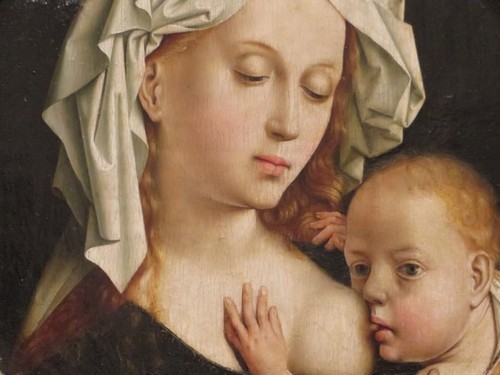
Mahler proposed the concept of the importance of empathic interactions of a parent with a child in order to healthy early development, similar to the ideas found in Kohut. Mahler, apparently, is most consonant with Kohut in the postulation that the roots of borderline pathology are delays in the early phases of development. For Mahler this is due to the failures in the passing sub-phase “reunification” as part of the process of separation-individuation at the age of 16 – 25 months (Mahler, 1975), and also with the observation that “the reanimation of previously blocked development is an inherent and powerful force of psychoanalytic psychotherapeutic process” (Levine, 1994, p. 123).
In turn, the assumption of stern (Stern, 1985) about the subjective life of infants, launched on the basis of their own extensive studies of psychological development of infants, as well as on the basis of the observations described by other investigators, support much of the language of Kohut directly and indirectly. For example, stern says:
“When a clinical eye is watching the development of the baby, he almost did not see any pathology. <…> Instead this observation have some typical patterns and some variable patterns. However, there is very little basis for the claim that any deviation from the norm will necessarily lead to pathology at a later stage. If the deviation is still observed, as deviant are observed namely the relationship with the caregiver, not just the baby itself” (p. 186, my italics).
This heavily supports the Central Kochetovsky teleonomia: in the atmosphere of adequate relationships between the self and the self someobject usually develops in a healthy way.
Kohut believed that affects and experiences together and create internetizirovannyh, sustainable imago-images which change gradually and are becoming more and more maturity as gaining new experiences. However, they remain necessary for a sense of being themselves. This is the function someobject. In the taxonomy stern they are called “representations of interactions generalized” (WGE). According to stern, they “constitute a basic unit for the representation of the core self” (1985, p. 98). If RGV has included an actual person, according to stern, activation of RGV (which can occur as a result of playback of even the smallest aspects of the original feelings) can produce “caused by the feeling of a companion” (evoked companion) – the inner sense of the presence of this person, which no longer depends on his physical existence. This is obviously very similar to kochetovski concept of someobject.
The Oedipal phase as a stage of healthy development (Heinz Kohut and Donald, Psychotherapist)

One of the important points of departure Kohut, from his early commitment to Freudian Orthodoxy was his statement that castration anxiety, which occupies a Central position in earlier psychoanalytic Canon, is not
“property of the Oedipal phase of a healthy child of healthy parents. <…> A healthy child of healthy parents enters the Oedipal phase with joy. The joy of experiencing them, not only due to the fact that he proudly responds to its own achievement gained in the course of development, namely the new and emerging capacity for emotional relationships and affirmation, but also the fact that this achievement causes the empathic glow of joy and pride on the part semiobjective Oedipal phase.” (1984, p. 14)
Here we are talking about a new understanding edipower period as a phase of development, which becomes pathogenic in that case, if earlier, the development was not deficient and deficient family environment did not leave the child without a healthy relationship between self and someobject. Kohut himself in another of his work, speaks as follows: “This particular set of conflicts called the Oedipus complex, is not a leading cause of psychopathology but its result” (1984, p. 53). This new understanding is reminiscent of the statement of Winnicott (1988):
“The Oedipus complex is <…> the description of health and Wellness. Illness is not inherent in the Oedipus complex, and the displacement of ideas and repression from <…> to the conflict. The boy is healthy and happy is he who reaches the Oedipal stage in his emotional and physical development in an environment full of family and who are in uncomfortable situations to really see <…> both parents, which he knows well, which are tolerant to ideas and whose relationships are strong enough that they were not afraid of the goods of close relations, generated by the passions of love and hatred on the part of the child” (p. 50).

Psychotherapeutic process in the approach of self psychology of Kohut
From the point of view of analytical psychology, the self, the healing mechanism of Mr Z was carried out mainly through self-knowledge – not through Freud’s principle of “where “it” (ID), there should be “I” (ego), “and through a gradual accumulation of structure of the self through transmuting internalization of the functions initially provided by the analyst. Kohut (1984) later comes to the conclusion that such healing occurs through a three-step process.
The first two steps include 1) analysis of the protective manifestations of the patient and 2) the deployment of transfers,
“then as the third step, the most important, for it determines the purpose and the result of healing, is opening the way of empathy (empathy) between the self and someobject, namely, the establishment of empathic alignment between “I” and someobject on adult maturity levels. This new channel of empathy permanently takes the place of the basis of previously repressed or split archaic narcissistic relationship; it removes the shackles that earlier archaic self was tied to archaic someobject” (p. 65).
In the context of clinical practice the first step will include the process of awareness shrink characteristic of the protection of the patient. In the case of Mr. Z the relevant protections were arrogance, sense of superiority and arrogance. Another patient protection can differ and even be opposite: for example, self-deprecation and humility. With awareness the characteristic of protection of the patient the analyst gains understanding of these mechanisms, which he can then explain to the patient.

This explanation is not necessarily technically-skilled (actually, most likely it will not). For example, an analyst might say, “looks Like you need to feel superior to me.” The patient the feeling that he understood, which may trigger the second step, namely, the formation shifts (transference) in the patient. These shifts, according to kochetovski concept, will make the character have arisen in the course of development deficits in the structure of the self of the patient. For example, if the patient did not receive sufficient of Triennale (mirroring) is completely natural early feelings of grandeur may be required to be reflected on the part of the analyst. Such reflection can take the form of observations and maintain analyst achievements of the patient or, perhaps, just really attentive listening to the patient.
However, the needs of the patient, expressed in the framework of the migration can never be fully satisfied. It will provoke reactions and complaints from the patient. Then these needs – in this example, it needs Triennale – can be explained to the patient. For example, an analyst might say, “When I realized what you told me, I noticed that you seem relaxed. You looked relaxed and satisfied. Must be nice to be heard and understood. However, when I incorrectly understood you, you’re upset”.

For explanation of the transfer may be followed by the next, third, step – opening a path to empathic communication on a Mature level. In other words, the analyst and the patient together can begin to understand and empathize with the situation of the patient in a manner that was previously impossible when the patient was limited by the structure of protection. Such communication itself is healing. Instead of having to stay in the trap of deficit of self, tied to early “I”-objects that are no longer appropriate in adult life, the patient will internalize the style of communication the whole “I” which later becomes part of the selfhood of the patient, how this could happen in childhood subject to receipt of sufficient empathic care.




The healthy development of the self in relations with parents: a comparison of the psychology of the self Heinz Kohut, the research of Margaret Mahler and Daniel stern
I have been examinating out some of your articles and i can claim pretty clever stuff. I will make sure to bookmark your website.
I find this incredibly interesting. Can I submit a question?